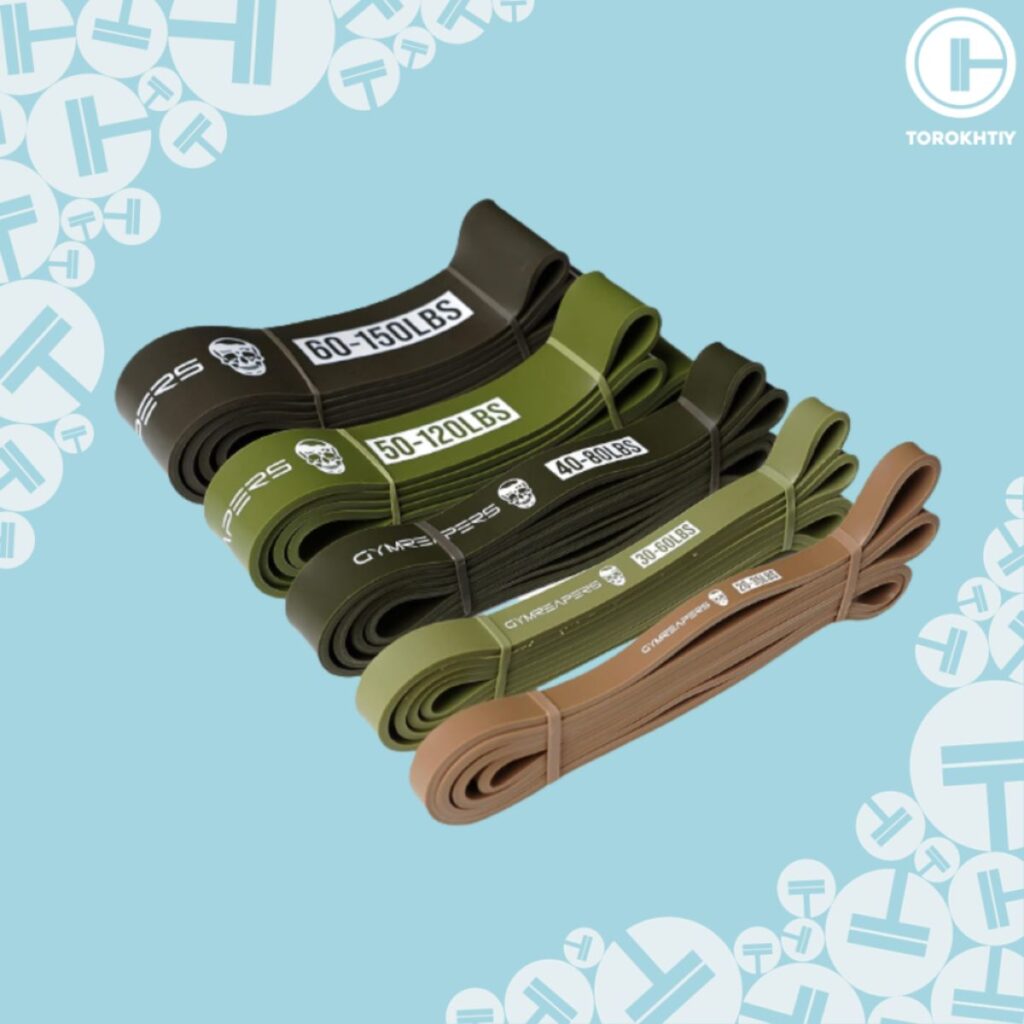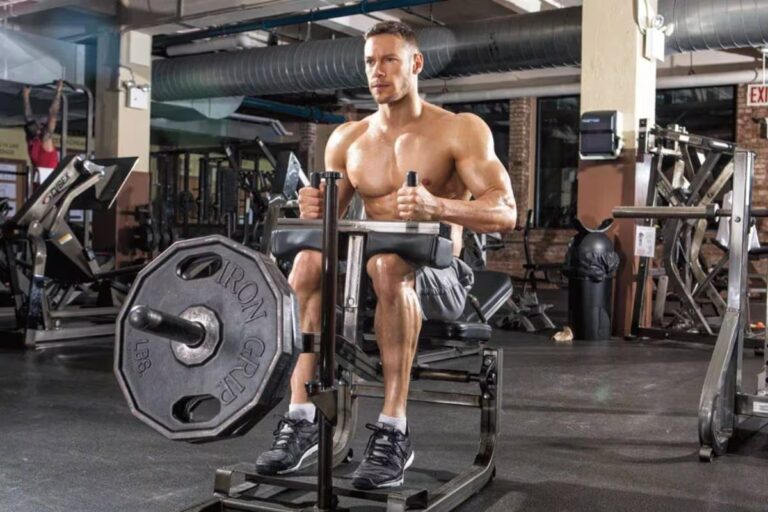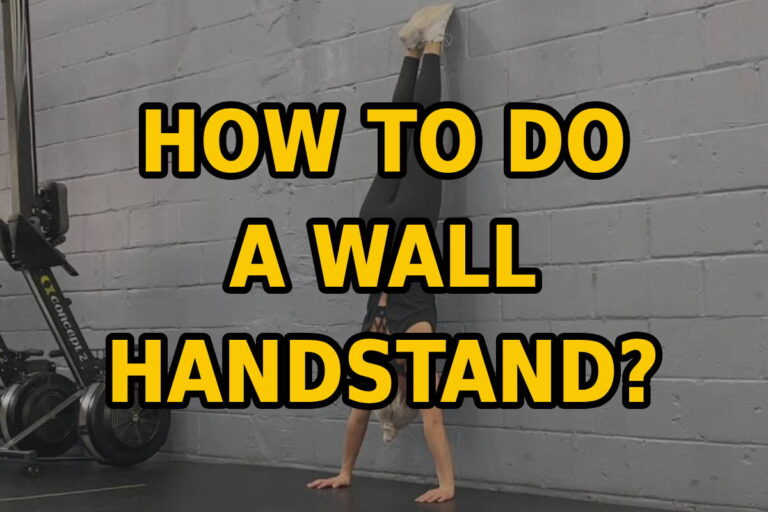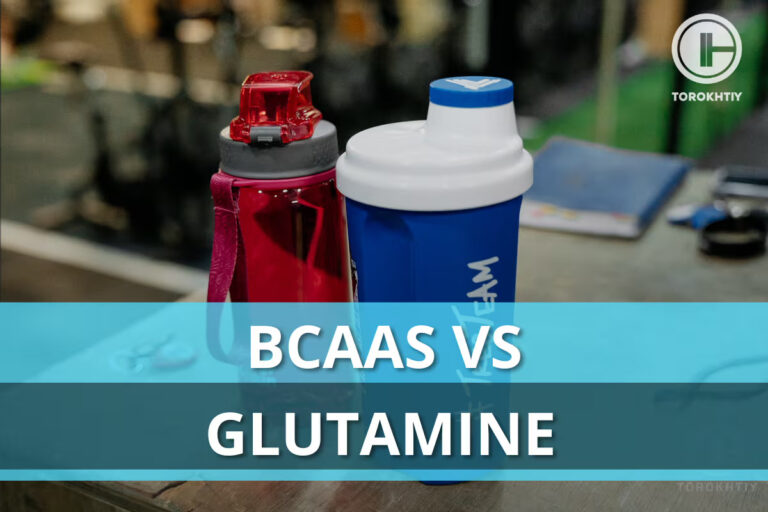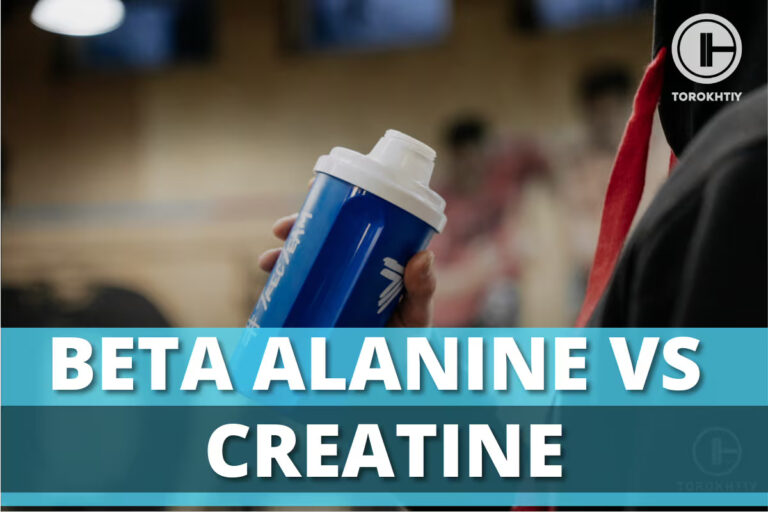9 Resistance Band Benefits According to Trainers
It’s hard to believe that a piece of elastic can be so effective. You can use them for pretty much anything you want, and you can take them anywhere. Literally – anywhere. But the benefits of resistance bands go way beyond just this.
They’re popular among people of all fitness levels because, depending on their level of resistance, you can use them for warming up, rehabilitation, strength and muscle building… The possibilities are almost endless.
Within this article, we’ll check how these affordable, colorful bands can provide a full-body workout, we’ll go over their benefits in detail and we’ll also check how you can incorporate them into your fitness routine.
It’s time to stretch your limits (quite literally!) so let’s get right into it!
What are the benefits of resistance bands? They’re famous for their versatility and they’re good for people of all fitness levels. Resistance bands can enhance strength, promote muscle growth, improve flexibility, help with rehabilitation and more.

9 Benefits of Resistance Bands
These cute-looking bands may seem simple. And, to tell you the truth, they really are very simple, but boy, do they pack a punch! Sure, you can use them for some light stretching or rehabilitation, but if you’ve ever visited a gym, you must have seen at least one big, buff guy using a resistance band.
You may have wondered how they can benefit from it, but resistance bands can be a great addition to almost any workout because they can be tailored to meet the specific needs of the workout itself and of the person doing it.
But enough rambling, you probably want more details on resistance band benefits so let’s start.
✅ Strength Training
Resistance bands are very useful when it comes to strength training because they give consistent tension throughout your workouts, engage the muscles, and promote their growth. And keep in mind that resistance bands give similar strength gains as traditional gym equipment does.
Since they have adjustable levels of resistance, it’s easy to use them to target specific muscle groups and also to adapt as you progress.
They’re also more joint-friendly than weights because they put less stress on your joints.
✅ Flexibility and Stretching
If you include a resistance band into your stretching routine, it will take it to a whole new level. They will help increase flexibility and expand your range of motion. They can also improve the elasticity of your muscles if you use them on a regular basis and reduce the risk of muscle strains and injury.
With the added resistance, your stretches will become more effective and your flexibility will improve.
✅ Cardio
You can use resistance bands for HIIT to intensify the workout and burn the calories more efficiently. Resistance bands are also great for cardio because they will up your heart rate without putting too much stress on your joints (this also makes them ideal for people with joint issues).
✅ Physical Therapy and Rehabilitation
You’ll often find resistance bands being part of rehabilitation because they are fantastic for it – they allow for controlled and gradual progress in regaining strength after injuries or surgeries.
Resistance bands enable isometric contractions, which are super important for rebuilding muscle strength, especially after long periods of inactivity.
If they’re used as part of a regular workout routine, resistance bands can help prevent injuries because they strengthen supporting muscles and improve the stability of your joints.
✅ Convenience
You know how most gym equipment is big, bulky and a hassle to take with you? Well, resistance bands are the complete opposite – they’re compact, lightweight and will fit right into your pocket. They’re ideal for maintaining your fitness routine while you’re on the go.
Of course, they’re perfect for home workouts too. That’s because they save space. You won’t have to sacrifice any space to be able to use them, which is not something you can often say for gym equipment.
And speaking of gyms – you hardly need them with resistance bands! They give you a complete workout without you having to pay for gym membership or equipment.
✅ Versatility
The absolute best thing about resistance bands – their versatility! They can be adapted to all fitness levels and a lot of different workouts.
And anyone can use them, regardless of if they’re a beginner or advanced, because you can simply adapt the level of resistance to your fitness level.
✅ Affordability
Instead of spending hundreds or even thousands of dollars on gym equipment, you can just buy yourself a few resistance bands. They’re a great money saving option. You should, of course, make sure to buy quality bands from a trusted brand because you want them to be able to withstand frequent use.
✅ Better Mind-Muscle Connection
You probably already know the importance of proper form when it comes to workouts. The great thing about resistance bands is they encourage it and promote a stronger mind-muscle connection.
The resistance the bands provide will challenge your stability and balance and improve overall body awareness.
✅ Better Posture
Resistance bands can engage your core very effectively, which leads to better posture and less risk of back pain. If you use them regularly, they can help align your body and reduce the strain that poor posture causes.
They’re also good for strengthening the muscles responsible for proper shoulder alignment.
7 Ways To Incorporate Resistance Bands Into Your Routine
Okay, so you’ve decided to include resistance bands into your workouts. But… How exactly do you do that? What do resistance bands do?
Yes, they’re fantastic and you’ve heard over and over again how everyone can use them, but what do you do with them once you get them?
If this is kind of what you’re thinking about, then you’re in the right place! Let’s check out step-by-step instructions on how to make friends with resistance bands!
1. Choose Correctly
If you get this wrong, then there’s not much that can be done to help make the bands usable. Choosing the correct bands is a foundation for good workouts.
First, think about variety – you need a set of bands with varying levels of resistance so you can progress gradually and tailor your workouts to what feels comfortable to you.
Also, pay attention to what you want to use the bands for. Lighter bands are good for stretching and rehabilitation, but if your priority is strength training, you’ll need heavier bands.
2. Basics
You may be completely new to resistance bands and that’s totally fine. Just make sure to take some time to learn how to use them properly.
Master the basics and then move on to something more challenging.
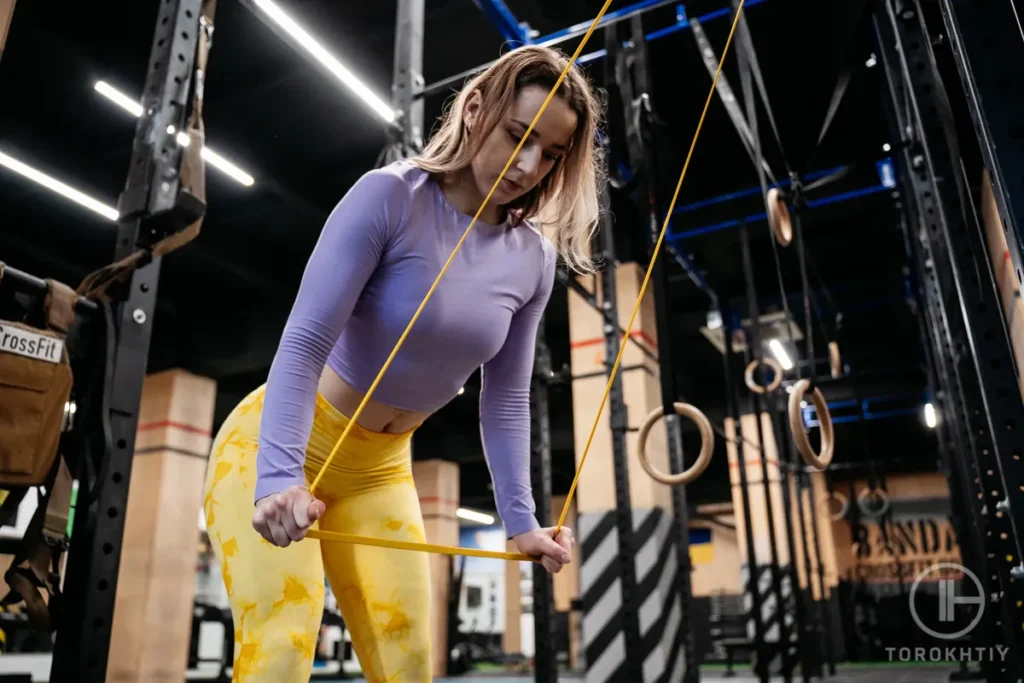
3. Warm Up
You have to prepare your muscles for the workout, so start with dynamic stretches to prepare your muscles and joints. Marching in place, leg swings, and arm circles are a great start.
4. Start With Basic Workouts
Start with something that you’re familiar with, like squats. Incorporate resistance bands into squats so you can target your quads, hamstrings, and glutes. Place the band under your feet and hold the handles at shoulder height.
You can also do rows; attach the band to a sturdy anchor point and do rowing exercises to strengthen your upper back and arms.
5. Focus on Your Form
Pay attention to your form during workouts. Your back should be straight, core engaged, and movements controlled. Avoid momentum because it doesn’t do anything for you.
Use the band’s resistance throughout the entire range of motion to make the most out of your workout.
6. Incorporate Bands Into Existing Workouts
Let’s say you already do yoga or Pilates and you’re happy with your workouts. Well, include a resistance band in your session for some extra resistance and flexibility.
You can also include a band into your cardio routine to torch even more calories.
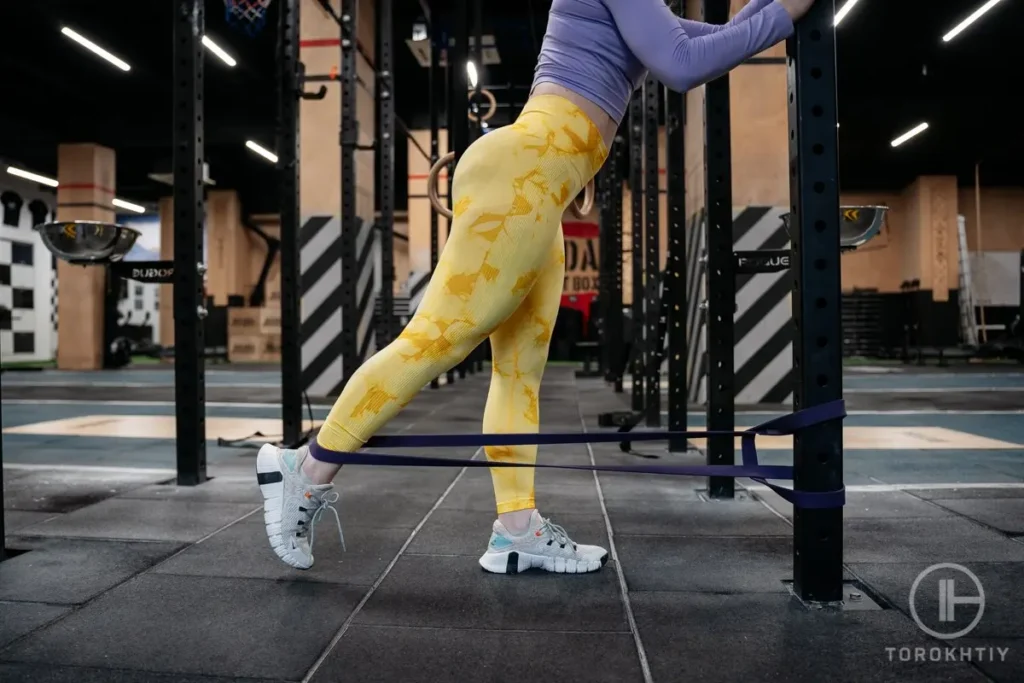
7. Recovery
When you finish your workout, don’t skip the cool-down. Do static stretches to prevent muscle soreness and improve flexibility.
Bands can be used for self-myofascial release (SMR), too. Just keep in mind that you don’t use resistance bands (loop, tube, figure-8, etc.) for SMR. For SMR, you want to use floss (also called voodoo or compression) bands instead. Even though floss bands are latex/rubber made, they are not resistance bands. Their primary purpose is to aid in mobility/recovery (e.g., via SMR).
SMR is a technique that involves applying pressure to specific points on your muscles to relieve tension and improve flexibility. If you stretch and pull the band over tight areas, you can help release muscle knots and improve blood flow.
Selecting the Right Resistance Bands
For you to be able to see (and feel) the benefits of using resistance bands, you need to choose them correctly. As versatile and fantastic as they are, they won’t do you any good if you don’t make the right choice.
The band that you choose is going to have a lot of influence on your workout, so take your time and do your research. If you’re relying on online reviews, check that the review is independent and not an ad. Also, you want bands from a trusted brand, especially if you don’t quite know your way around them yet.
User reviews are a great source, as well, so read a few (if they’re available) before you decide on which bands you want.
Other than this, there are also some other helpful tips that can make the decision process easier for you.
1. Types
Resistance bands come in several different types.
First, you have the loop bands. They’re continuous loops of elastic material and don’t have any handles. Loop bands are ideal for lower body workouts (like leg lifts and glute bridges) as well as dynamic stretches.
They’re also fantastic for complementing strength training workouts. The consistent tension they provide helps engage and activate the muscles better, which can lead to improved strength and muscle growth. They come in a range of resistance levels, and they’re usually color-coded.
There are also tube bands with handles. These have a flexible tube with a handle on each end. They’re super versatile, but they’re especially good for upper-body workouts like bicep curls and chest presses. Of course, they’re good for lower-body workouts as well. With these, the level of resistance is changed by adjusting the band’s length or tension.
Figure-eight bands are shaped like the number eight, and you can use them for both upper and lower-body workouts. They’re a lot of people’s favorites because they’re easy to use and very durable. Like loop bands, they come in varying levels of resistance.
2. Your Goals
Before choosing a band (or bands), ask yourself what it is that you want to achieve with them.
If your priority is strength training, then you want either tube bands or figure eights with higher resistance levels. These will give you the tension you need to challenge your muscles during exercises like squats, rows, and presses.
Go with loop bands if you want maximum versatility. They can be used for flexibility, mobility, dynamic stretches, strength training… Pretty much everything. They come in a range of resistance levels and allow you to progress as you become more flexible.
If you’re recovering from an injury or want gentle resistance for rehabilitation, start with the lightest level of resistance that you can find (these are usually green or yellow). Usually, loop bands are the top choice in this category.
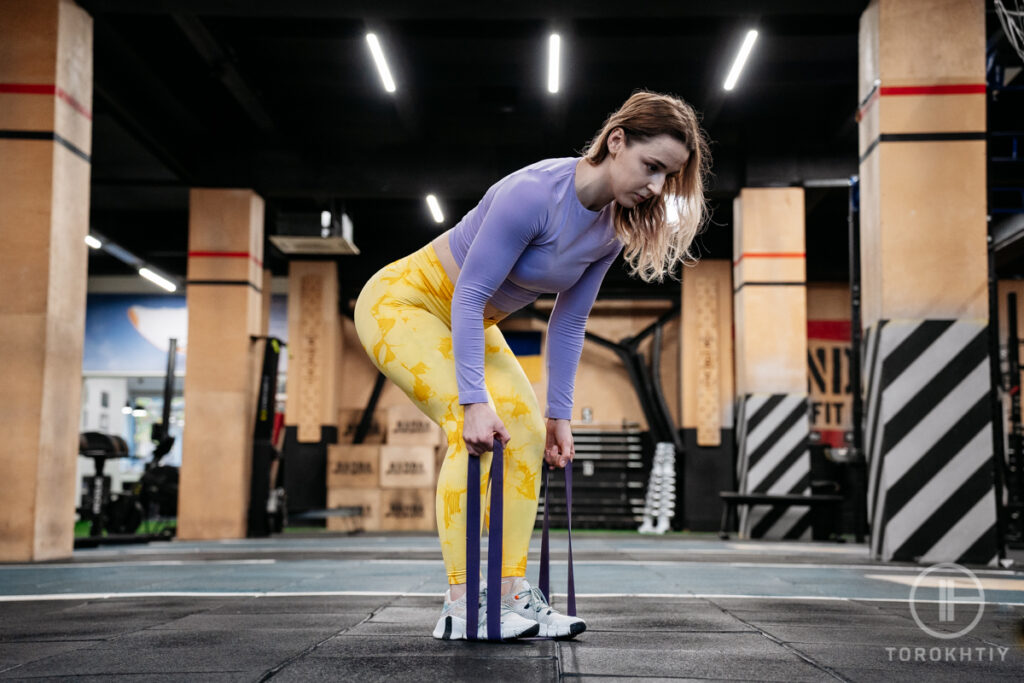
3. Resistance Levels
There are 3 main resistance levels – light, medium and heavy.
If you’re a beginner, recovering from an injury, or want to focus on flexibility, you need light resistance (2-6 kg). Light resistance bands are ideal for gentle workouts and stretching. If they’re color-coded, they’re most likely green or yellow.
Medium resistance bands will give you a moderate challenge and they’re very versatile. They’re usually red or blue and offer a resistance equivalent to about 7 to 16 kilograms of force.
When it comes to advanced strength training and building muscle, your best bet are heavy resistance bands (17 to 34 kg). They’re usually black or purple and they significantly challenge your muscles. Be careful with these, because they’re only for experienced athletes.
4. Sets
Your best choice is always multi-band sets that have bands with varying resistance levels. The sets give you a lot of versatility and allow you to easily adjust the resistance.
5. Durability
High-quality bands are made of durable latex or rubber and they’re a lot less likely to snap or lose elasticity over time.
Resistance Bands We Recommend
Are you overwhelmed by all the things you need to pay attention to before selecting resistance bands? You’re also probably a bit anxious about potentially making the wrong choice. Well, this can make your life a lot easier, because here’s a set of high-quality, versatile resistance bands.
Gymreapers is known for delivering superb value for money and is a trusted, well-known brand. Their company is represented by world record-holding powerlifters, IFBB Pros and world-class trainers.
This military resistance band set is a great way to either start using resistance bands or to upgrade from the ones you already have. They’re made of durable latex, and they’re super lightweight.
With them being this lightweight, you may be worried about durability, but these are exceptional in that regard and will last you a long time.
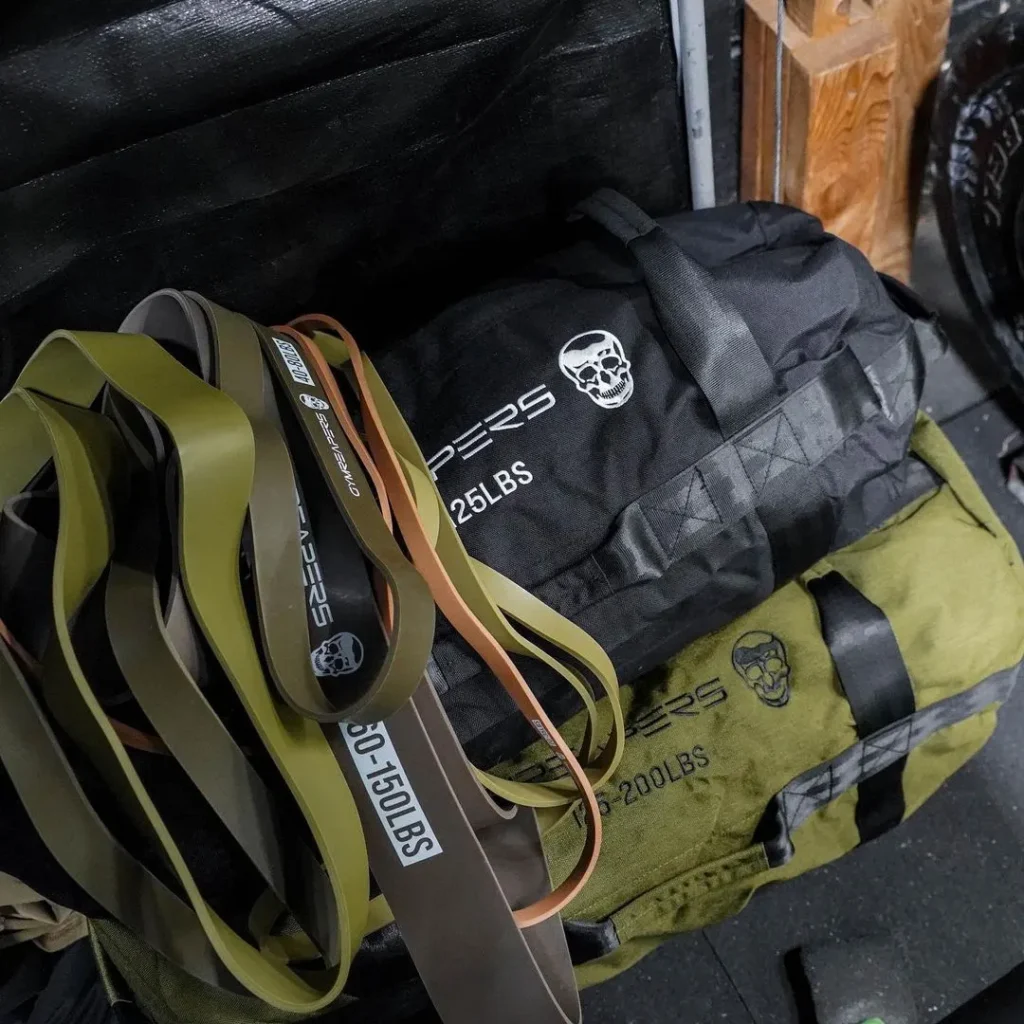
The 41’’ of length is ideal because they won’t be too short, no matter what you want to use them for. And when you roll them up, they come at only 10’’, so it’s easy to take them anywhere.
You’ll notice a bit of an odor when you first get them, but it airs out soon and it’s not that uncommon for latex bands.
All things considered, these are top-tier!
Positives:
Could be better:
FAQ
Do resistance bands really work?
They sure do and there are many resistance bands uses! They’re fantastic for rehabilitation, strength training and flexibility. They provide consistent resistance, engage a lot of muscle groups and they’re very versatile.
What happens if I use resistance bands every day?
Use them every day if you want – just don’t train hard everyday. Training, stretching, mobility, cardio – go for it.
Be sure that you recover properly and be sure that you move every day.
Can you lose belly fat with resistance bands?
You can’t really target your belly fat with resistance bands, but they can contribute to overall fat loss better than other forms of training. This is because resistance band workouts are very effective and help burn calories, which then contributes to calorie deficit.
Conclusion
Now you know the answer to the question “ What are resistance bands good for?”, you know how to use them and what to expect of them!
If you decide to include them in your fitness routine, they will help you break plateaus, make your workouts more interesting and challenging and they can also save you some money!
Remember to be consistent and to always make your form a priority.
I’d love to hear what you think of this! Do you use resistance bands? If you do, which type is your favorite and why? What exercises do you use them with? Which benefits of resistance band training have you seen so far?
Leave your opinions and answers below, and let’s jump into an informational and lengthy discussion! Stretching out!
Also read:
- Resistance Band Rows
- Resistance Band Back Exercises
- Best Resistance Bands for Men
- Can You Build Muscle With Resistance Bands
- What Size Resistance Bands Do I Need
- Best Booty Bands
- Barbell Deadlift With Resistance Bands
References:
- Jaqueline Santos Silva Lopes, Aryane Flauzino Machado, Jéssica Kirsch Micheletti, Aline Castilho de Alme1ida, Allysiê Priscila Cavina, Carlos Marcelo Pastre, “Effects of training with elastic resistance versus conventional resistance on muscular strength: A systematic review and meta-analysis”; National Library of Medicine, https://www.ncbi.nlm.nih.gov/pmc/articles/PMC6383082/ (accessed 20 September, 2023).
- Amrinder Singh, “Resistance Band Training: Effect on Physical Parameters”; Research Gate, https://www.researchgate.net/publication/350959326 (accessed 20 September, 2023).
- “Muscle Isometric Contraction”; Science Direct, https://www.sciencedirect.com/topics/immunology-and-microbiology/muscle-isometric-contraction (accessed 20 September, 2023).
- “How Effective Are Resistance Bands for Strength Training?”; Cleveland Clinic, https://health.clevelandclinic.org/should-you-try-resistance-bands-for-strength-training/ (accessed 20 September, 2023).
- Hyoung-Kil Park, Min-Kyung Jung, Eunkyung Park, Chang-Young Lee, Yong-Seok Jee, Denny Eun, Jun-Youl Cha, Jaehyun Yoo, “The effect of warm-ups with stretching on the isokinetic moments of collegiate men”; National Library of Medicine, https://www.ncbi.nlm.nih.gov/pmc/articles/PMC5833972/ (accessed 20 September, 2023).
- Jamil R. Neme MD, “Balancing Act: Muscle Imbalance Effects on Musculoskeletal Injuries”; National Library of Medicine, https://www.ncbi.nlm.nih.gov/pmc/articles/PMC9324710/ (accessed 20 September, 2023).
- Jenna Fletcher, “When and how to spend a rest day”; Medical News Today, https://www.medicalnewstoday.com/articles/rest-day (accessed 20 September, 2023).
- Xinhong Liu, Ye Gao, Jiandong Lu, Qirui Ma, Yajun Shi, Jingqi Liu, Shuai Xin, Hao Su, “Effects of Different Resistance Exercise Forms on Body Composition and Muscle Strength in Overweight and/or Obese Individuals: A Systematic Review and Meta-Analysis”; Frontiers, https://www.frontiersin.org/articles/10.3389/fphys.2021.791999/full (accessed 20 September, 2023).
- Ricardo M. Ferreira, Pedro N. Martins, Rui S. Goncalves, “Effects of Self-myofascial Release Instruments on Performance and Recovery: An Umbrella Review”; PubMed Central, https://www.ncbi.nlm.nih.gov/pmc/articles/PMC9362891/ (accessed 03 October, 2023).
Why Trust Us?
With over 20 years in Olympic Weightlifting, our team does its best to provide the audience with ultimate support and meet the needs and requirements of advanced athletes and professional lifters, as well as people who strive to open new opportunities and develop their physical capabilities with us.
By trusting the recommendations of our certified experts in coaching, nutrition, dietology, and sports training programming, as well as scientific consultants, and physiotherapists, we provide you with thorough, well-considered, and scientifically proven content. All the information given in the articles concerning workout programming, separate exercises, and athletic performance, in general, is based on verified data. We ensure that you can rely on our professionals’ pieces of advice and recommendations that can be treated as personalized ones which will benefit you and fully meet your needs.
The product testing process is described in more detail here
Author: Ihor Shymechko
Pro Olympic Weightlifter, Coach
Best Results: Snatch – 208 kg,
C&J – 240 kg
Ihor has been a professional weightlifter since 1996, boasting over two decades of competition experience. His notable achievements include clinching the European Championship in 2009 and securing a silver medal in the 105kg division at the Senior World Championships in 2011. Ihor represented his country in the 2008, 2012, and 2016 Summer Olympics. After retiring from competitive weightlifting, he transitioned to coaching, leveraging his vast experience to guide athletes who now compete on both national and international stages.

